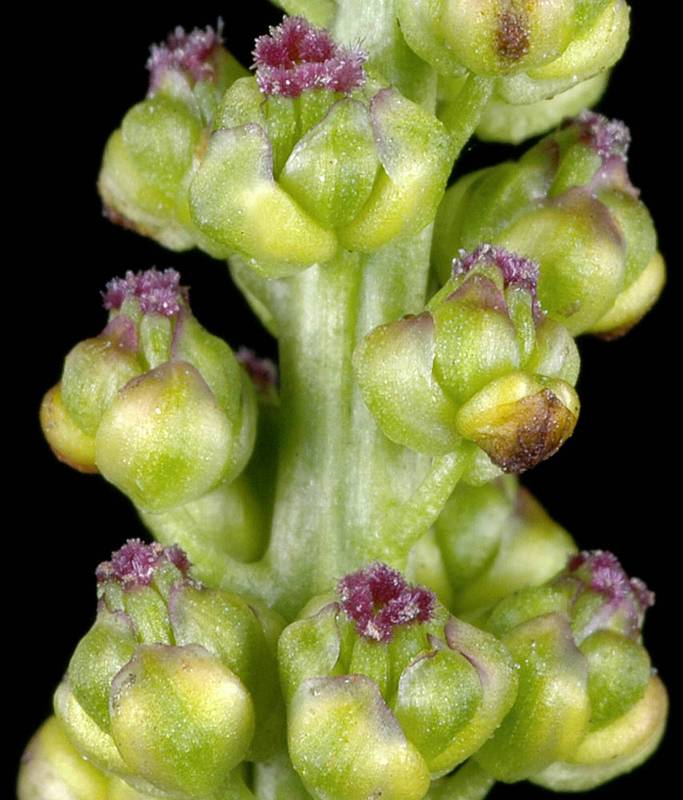Hosted by the University of Washington Herbarium, Burke Museum
Publication: Sp. Pl. 1: 339. (as maritimum). 1753.
Origin: Native
Herbarium search: CPNWH
Notes: The plants are variable and the taxonomy is disputed; small plants with bilobed ligules are called T. concinna, but large plants can have bilobed or entire ligules, We follow Jepson eFlora in separating this from T. concinna.
FNA22: "This taxon has been separated into Triglochin concinna and T. maritima based upon the lobing of the ligule and the smaller size of the plants of the former (e.g., J. L. Reveal 1977; R. F. Thorne 1993). On a local basis such a separation seems warranted. Examination of the T. maritima complex throughout the Americas, however, reveals continuous variation from small, widely spaced plants with 2-lobed ligules to large, tufted plants with unlobed ligules, including plants with all combinations of those characters.
Triglochin maritima is important in livestock management because it is quite toxic: it is a cyanide producer."
References:
Last updated 1/14/2024 by David Giblin.

